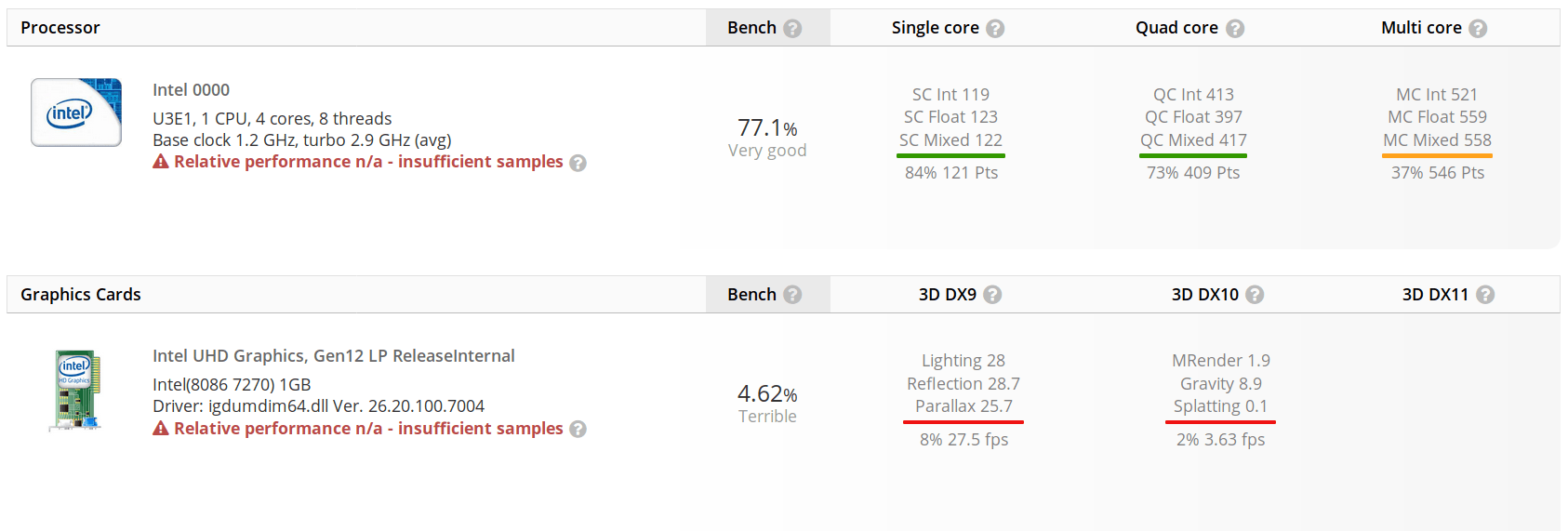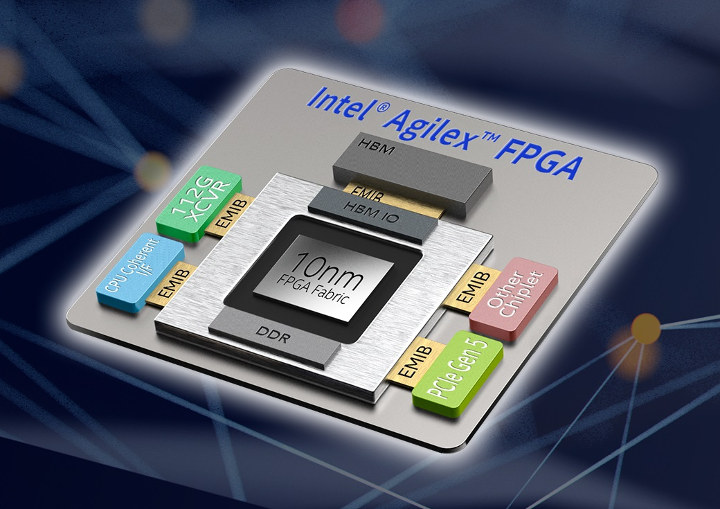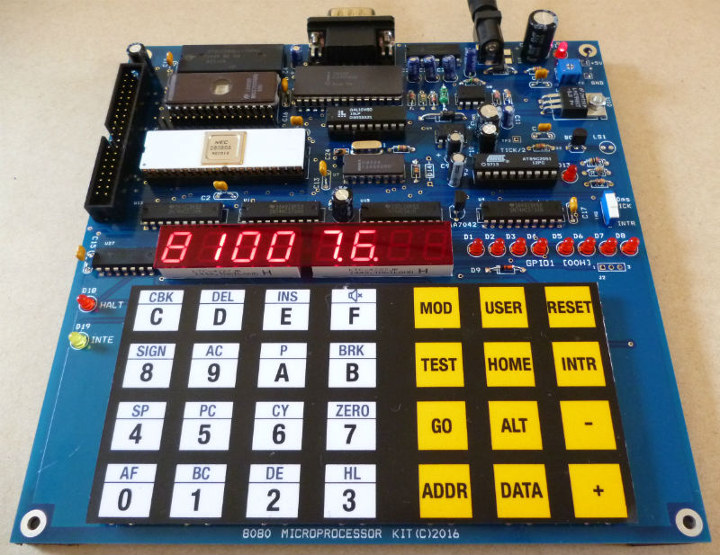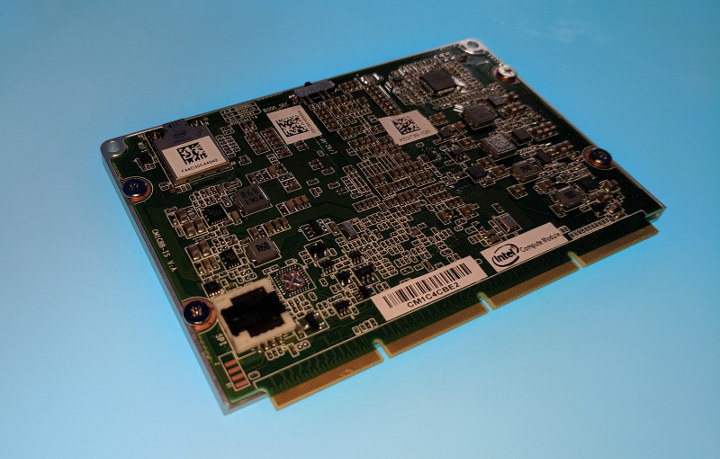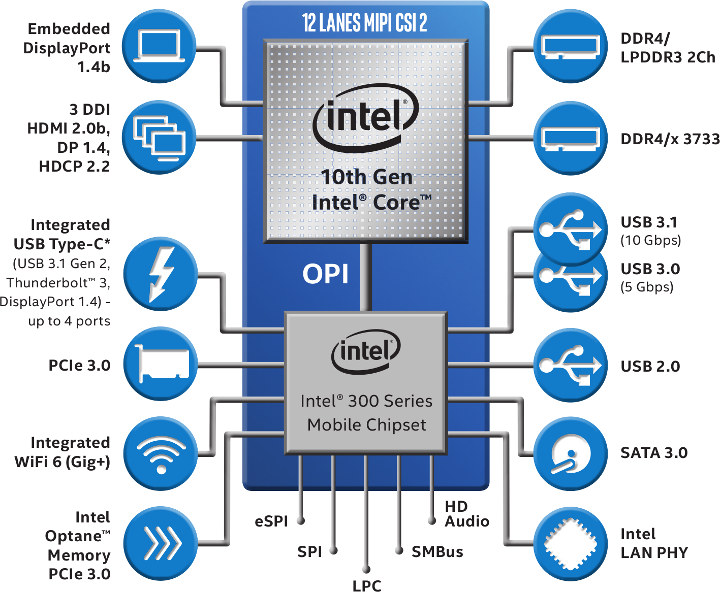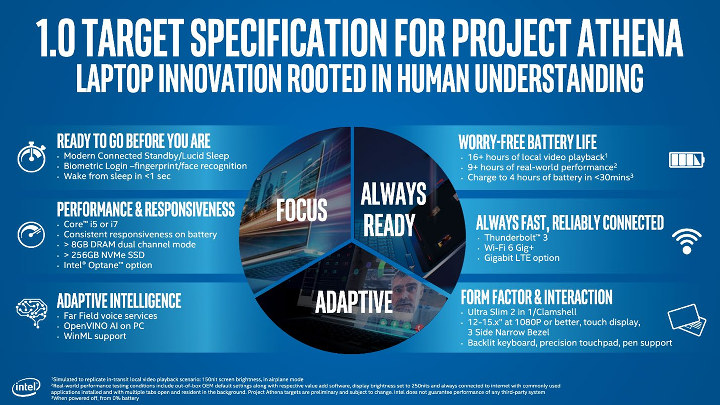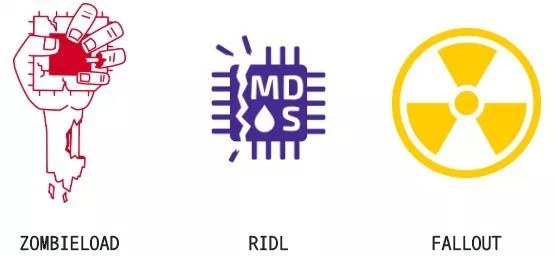The current high-performance low power 5W Intel processors are part of Amber Lake family, which will be followed by Comet Lake in 2020, and Tiger Lake in 2021 according to a roadmap leaked a few months ago. It looks a little too early for this, but NotebookCheck.net reports an unnamed Intel Tiger Lake Y-series processor has showed up in UserBenchmarks website. The system is said to feature an “Intel TigerLake Y LPDDR4x T4 Crb” motherboard, with an “Intel Tiger Lake Client Platform” coupled with 12GB DDR4 memory. The processor is only named “Intel 000” and comes with 4 cores, 8 threads having a base clock of 1.2 GHz, and an (average) Turbo clock of 2.9 GHz. The SoC also comes with a Gen12 Intel UHD Graphics, but the computer also features a much faster AMD RX 580 graphics cards so bear this in mind if you’re looking at graphics benchmarks. […]
Intel Agilex SoC FPGA Features Four Arm Cortex-A53 Cores
Intel announced their new Agilex FPGA family manufactured with a 10nm process earlier this April, but it only caught my eyes recently when I saw “Agilex SoC FPGA” listed in Linux 5.2 Arm’s changelog. The Intel SoC FPGA is there simply because it comes with four Arm Cortex-A53 cores. Three family have been announced so far, although the later is shown as coming soon: Intel Agilex F-Series FPGAs and SoCs – Transceiver support up to 58 Gbps, increased DSP capabilities, high system integration, and 2nd Gen Intel Hyperflex architecture for a wide range of applications in Data Center, Networking, and Edge. Option to integrate the quad-core Arm Cortex-A53 processor. Intel Agilex I-Series SoC FPGAs – Optimized for high performance processor interface and bandwidth intensive applications. Coherent attach to Intel Xeon processors with Compute Express Link, hardened PCIe Gen 5 support and transceiver support up to 112 Gbps. Intel Agilex M-Series […]
Fullfill your Nostalgia with Development Kits based on Intel 8080, Motorola 6802, Z80… Processors
Intel 8080 processor was released in April 1974, Motorola 6802 in 1976, and people in their late 40’s, 50’s or older may have experimented with those more than 40 years. People may still have those at home, but surely it’s not possible to purchase those in 2019 if suddenly you’ve got that nostalgia feeling getting at you, right? Apparently, it is, as Wichit Sirichote, an associated professor at the Department of Applied Physics in King Mongkut’s Institute of Technology, in Bangkok, Thailand has designed a few development kits based on those older processors. Let’s take the 8080 devkit as an example to check out the features of such kits: CPU – NEC 8080 CPU clocked at 2.048MHz Memory & Storage – 32KB RAM, 32KB EPROM Memory and I/O decoder chip – GAL16V8D PLD Oscillator – 8224 chip with Xtal frequency of 18.432MHz Bus controller – 8228 chip with RST 7 […]
Intel NUC Compute Element Merges Compute Card and Computer-on-Module Benefits
Intel unveils the Compute Card at CES 2017. The business-card-sized module was supposed to allow for easy upgrades or repairs of modular computers by inserting the Computer Card in a proprietary socket without having to open the computer or device. Linuxium posted a review of the Compute Card and dock back in 2018, and noted that while performance was good, the price was really excessive for most applications. The Intel Compute Card was eventually discontinued, and an article on PCMag does confirm one of the reasons was price: According to the Intel rep we spoke with, that sealed design and extra durability added nominally to the card cost but about $50 to each unit on the OEM side to incorporate the module, which stunted its adoption. The Compute Card was easy to insert and replace, but OEM’s have long had another option for upgrades: Computer-on-Modules. In x86’s world, this often […]
9W Intel Ice Lake Y-Series Processors Coming with Gen11 Graphics, 10nm Process
Intel has provided a few more details about their upcoming Intel Ice Lake Y-Series processor that will succeed their Amber Lake Y-Series family comprised of Core m, and Core i5/i7 processors with 5W to 7W TDP. Ice Lake Y-Series processor will come with the latest Intel Gen11 graphics with up to 64 EU (Execution Units), have a higher 9W TDP, configurable up to 12 Watts, and be manufactured with Intel’s 10nm process. Highlights of Intel Ice Lake Y-Series processors: CPU – 10nm+ quad-core processor, 14nm Platform Controller Hub (PCH ) GPU – Gen 11 Intel Graphics Engine, up to 64 EUs; Open GL 4.5, DirectX 12, and OpenCL 2.2 API support AI – Intel GNA (Gaussian Network Accelerator) Memory I/F – LPDDR4/x-3733 Camera – IPU4p: 16MP, 4K30, 4x cameras, RGB+IR camera Video Output eDP 1.4b up to 4K120/5K60 (10-bit) resolution DisplayPort 1.4 up to 4K120/5K60 (10-bit) resolution HDMI 2.0b up […]
Project Athena Specification 1.0 – Fast Response Times and Long Battery Life
Project Athena innovation program aims to provide a set of guidelines for Windows or Chrome OS always-on always-connected laptop powered by Intel processor. At the time of the first announcement at CES 2019 few details were provided, but Intel has now released Project Athena 1.0 target specification which gives clearer details of what such laptops will have to offer. Intel also introduced new “key experience indicators” (KEI) aligned with real-world conditions in order to provide to best experience to end-users. Project Athena 1.0 target specification defines six key areas of innovation: Instant Action – Modern Connected Standby and Lucid Sleep (feature of Chrome OS) features implement fast wake with a simple lid-lift, push of a button or quick fingerprint recognition. System wake from sleep must occur in less than 1 second Performance and Responsiveness – Systems based on Intel Core i5 or i7 processors with Intel Dynamic Tuning Technology, a […]
More Intel Processor HW Security Flaws. Meet Microarchitectural Data Sampling (MDS)
2018 did not start so well for processor vendors, especially Intel, but also AMD, Arm and others as some of their processors leveraging speculative execution were impacted by Spectre and/or Meltdown hardware security bugs. The workarounds to improve security had a downside as they affected performance in some specific use case. Panic ensued as the bug was revealed to the public a bit too early, so companies were not fully ready with their mitigations / workarounds. Then in summer of 2018, another hardware security flaw known as Foreshadow or L1 Terminal Fault came to light. The new flaw potentially enabled the attacker to access data stored in L1 cache. Provided you have updated your operating systems to the latest version, your computers and devices should be protected against those vulnerabilities, and you can even check with a script working in Linux or FreeBSD. But this now looks like a never […]
Intel adds Three 7W Amber Lake-Y Processors
Intel announced their Amber Lake family of low power high performance processors, officially known as Intel Core Y-Series processor last year with three SKUs: Core m3-8100Y, Core i5-8200Y, Core i7-8500Y which are all dual core/quad thread processor offering different base and boost CPU frequencies, and sporting the same UHD 615 graphics. As I browsed Intel’s Ark “previously Amber Lake Y” page this morning, I found out the company added three more processors to the family in Q1 2019. The new processors also come with two cores and four thread, but at higher frequency, and TDP is fixed to 7W, while the first three model at a 5W TDP configurable up to 7 or 8 Watts or down to 3.5 or 4.5 Watts. They are also equipped with Intel UHD Graphics 617 graphics that appears to only offer a higher boost frequency to 1.05 GHz instead of 900/950 MHz for UHD […]


